
5 minute read
On a Roll
On A Roll by NANCY CARLISLE Senior Curator of Collections
Emily Tyson and her stepdaughter, Elise, had only once seen the century-plus-old Hamilton House with its 110 acres in South Berwick, Maine, when they learned from their friend, the author Sarah Orne Jewett, in 1898 that the property was for sale. Elise later stated in a letter that “so strong was the charm for us that nothing more was necessary, and we neither of us saw it again until we owned it.” The Tysons immediately set about renovating it for use as a summer house. They hired architect
Herbert W. C. Browne, a founding partner of the Boston firm Little and Browne, to work with them on the restoration. It was probably Browne who encouraged them to reproduce the original eighteenth-century wallpaper in the center hallway.
The Tysons commissioned a reproduction from the
Boston-based wallpaper company Gregory and
Brown. That reproduction paper has remained in place for about a decade longer than the
Wallpaper hanging
PAGE 6 A workman installing the first pillar and arch reproduction wallpaper at Hamilton House in 1898. The Tysons had the wallpaper reproduced from the original eighteenth-century design that was in the house when they bought it. Above Wallpaper contractor Sarah Smyth of John J. Smyth, Ltd., of Medford, Massachusetts, installing the new reproduction paper in thespring of this year.
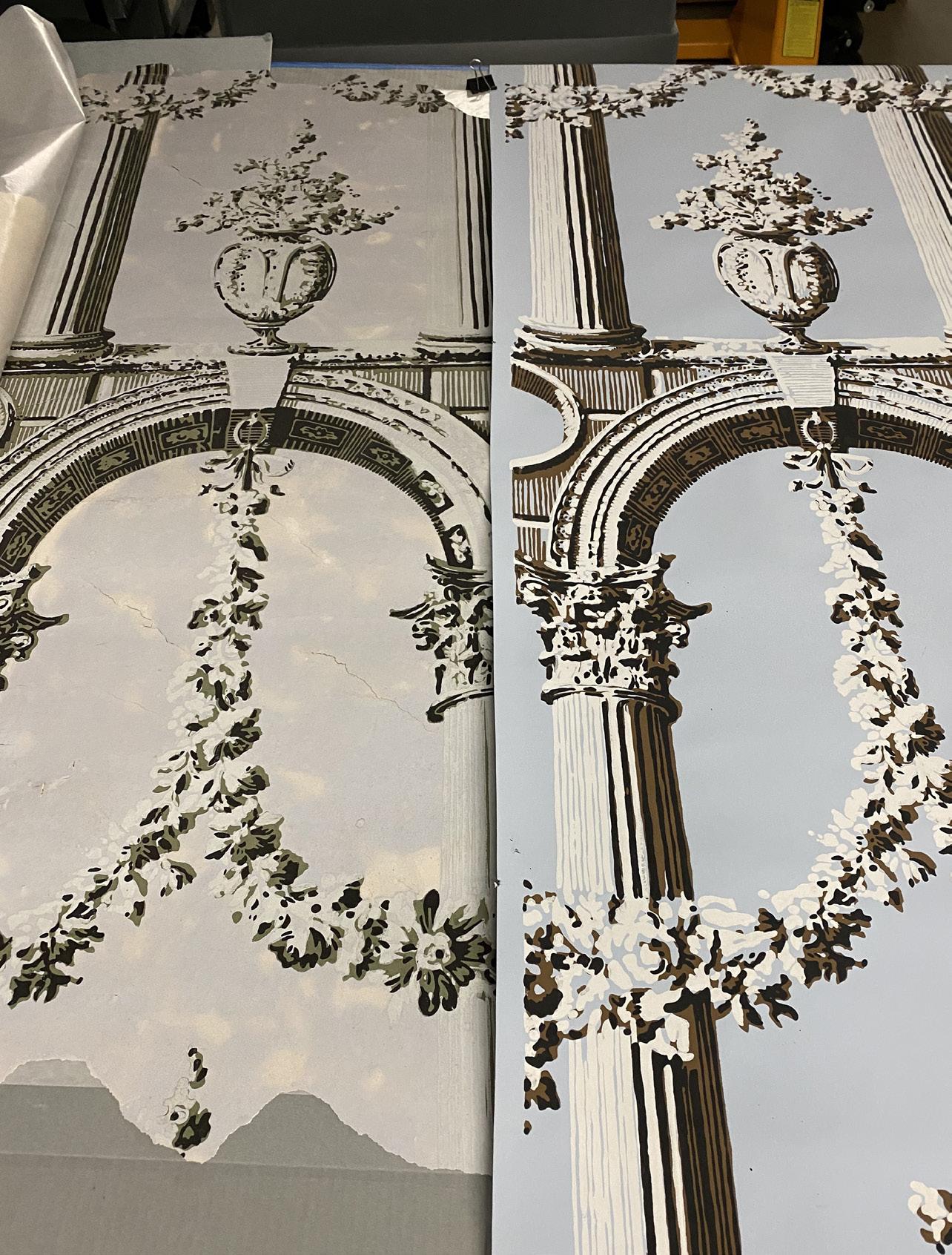
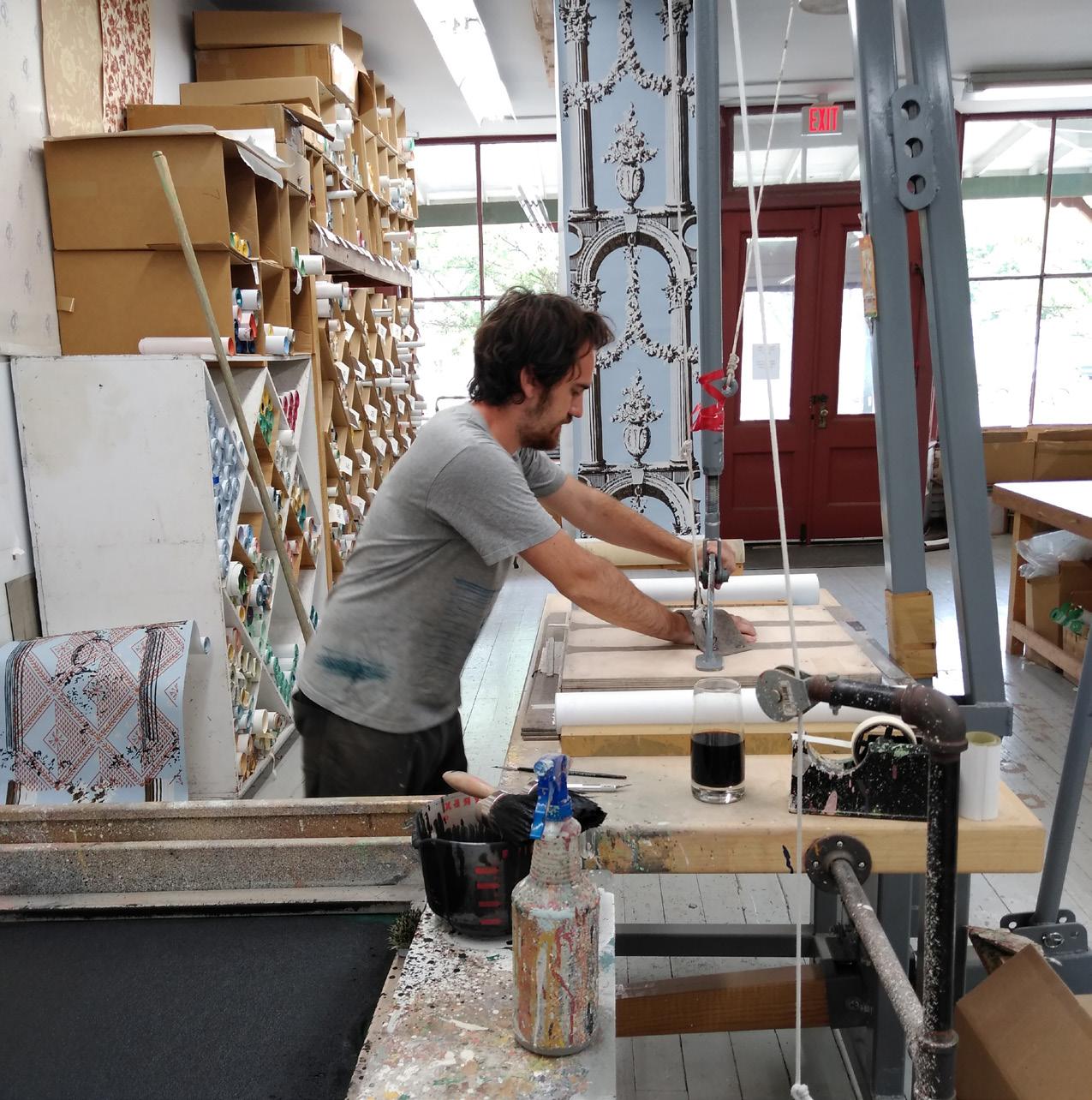
For color matching, a sample of the new product (on the right) was laid over a segment of the 1898 wallpaper. Below Jack Bryant of Adelphi Paper Hangings using a foot-operated block printing press to reproduce the pillar and arch pattern.
eighteenth-century covering it replaced.
The Hamilton pillar and arch wallpaper (so called for obvious reasons) is one of the best documented wallpapers in Historic New England’s collection of more than 6,500 examples. Not only do we have a large sample of the original wallpaper as well as unused samples of the nineteenthcentury reproduction, we also have photographs showing the reproduction wallpaper being installed in the late 1890s.
The eighteenth-century paper was probably printed in Boston, an early example from the wallpaper industry that took off after the American Revolution. It was blockprinted in white, brown, and black on a gray ground. The 1898 paper was block-printed using the same colors, but on a bright blue ground. The blue ground on the installed paper had already faded when Emily Tyson donated an unused piece in 1917.
More than thirty years ago, when the paper was beginning to fail, Historic New England convened a group of wallpaper and preservation experts to determine whether it should be removed and replaced. The group decided that because of its importance as one of the earliest documented examples of reproduction wallpaper, we should keep it in place as long as possible. However, three decades later the deteriorated wallpaper and problems with the wall meant that the time had come to replace the 1890s wallpaper.
Historic New England grappled with three options. The first was to digitally reproduce the paper. Historic New England has used this technology with very good results for reproduction papers installed at Beauport, the Sleeper-McCann House,
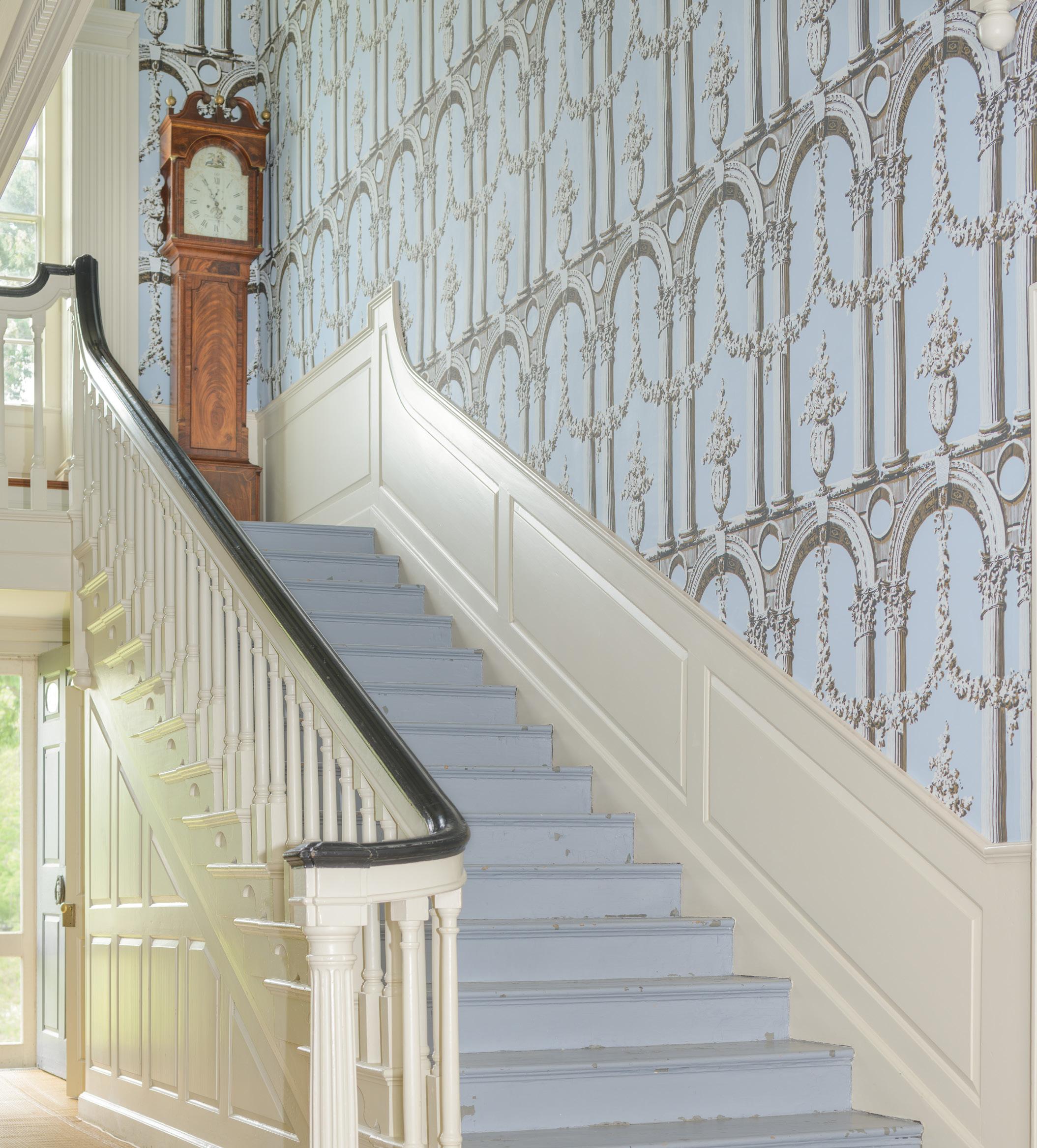
A view of the staircase after completion of the wallpaper installation.
in Gloucester, Massachusetts, and Quincy House in Quincy, Massachusetts. Although this was the least expensive reproduction method, the digital quality was not sufficient because of the huge expanse to be covered.
The second option, widely used in the ninetenth century, was roller printing. Invented in Scotland at the end of the eighteenth century, roller printing uses engraved designs on large, power-driven cylinders with a separate cylinder for each color. This process is cost prohibitive for special orders because of the expense of setting up the cylinders.
The third choice, used for the original Hamilton House wallpaper and the 1890s reproduction, was block printing. This is the most labor-intensive method, but the results are luscious, resulting in inks that appear almost tactile on the surface of the paper. Because of the importance of the Hamilton House wallpaper, Historic New England selected this technique.
Working with Adelphi Paper Hangings, a Sharon Springs, New
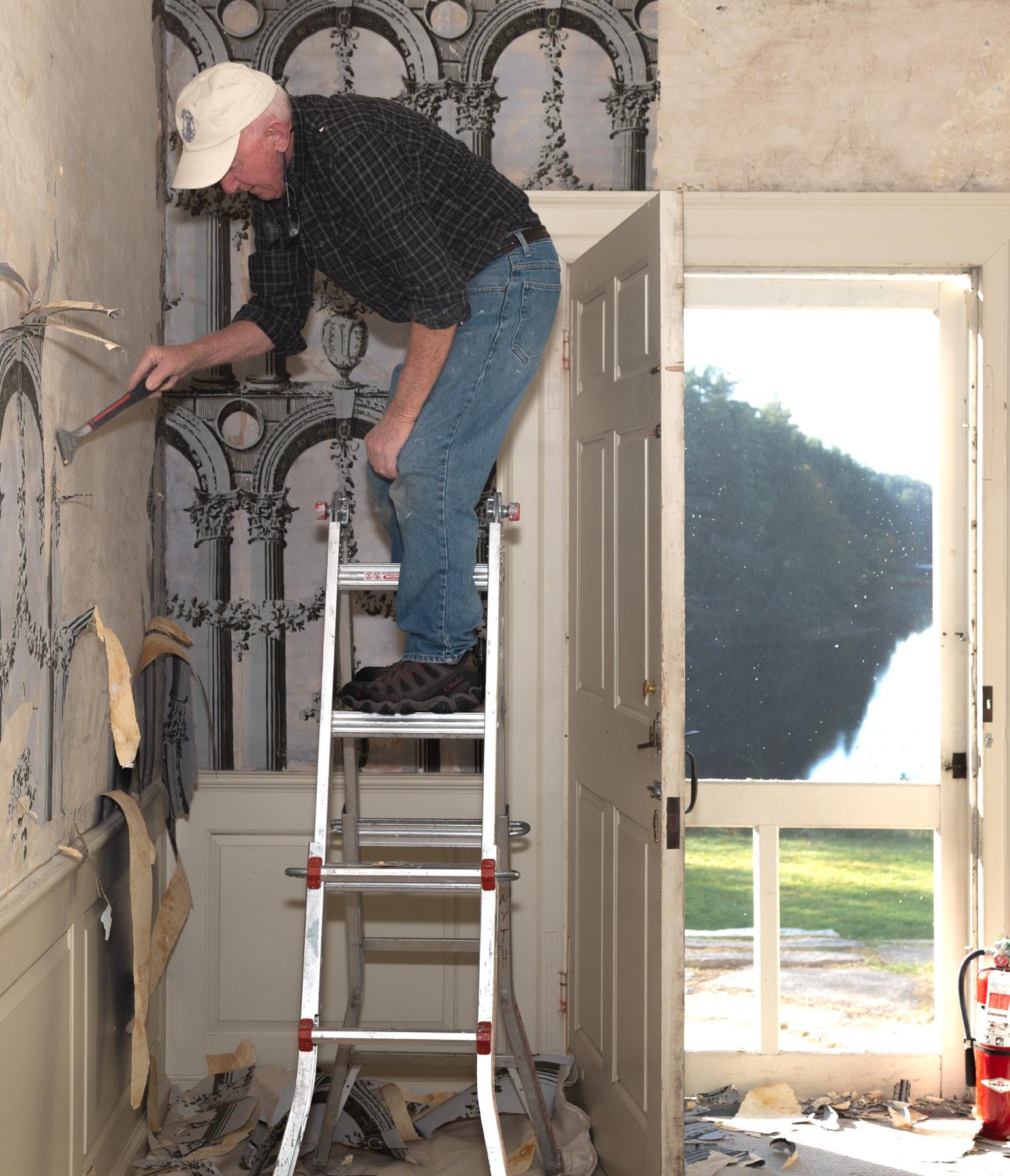
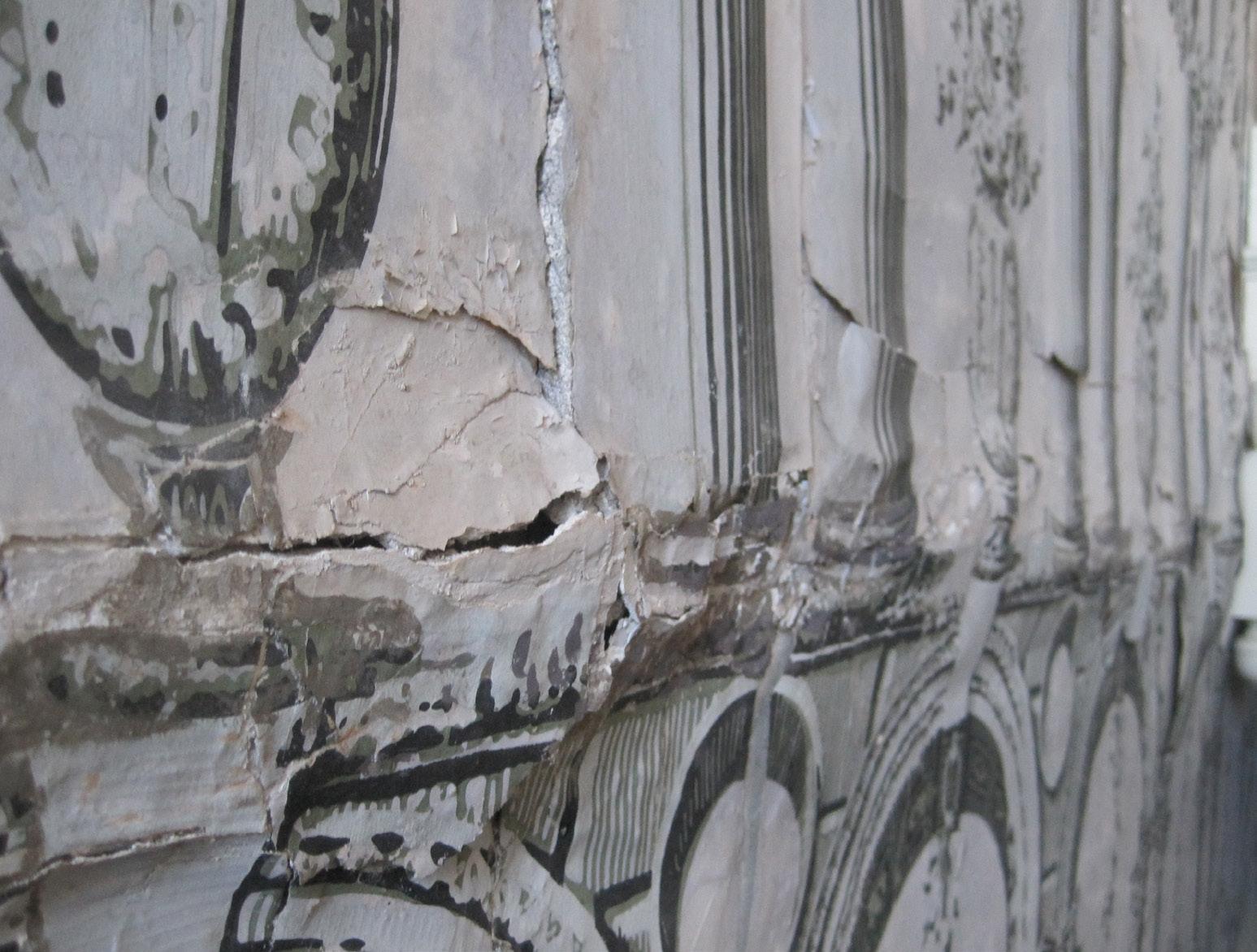
TOP Contractor John Smyth removing the old wallpaper. Bottom A close-up of the wall shows bulging plaster, which required extensive repair before the reproduction wallpaper could be hung.
York, company that specializes in blockprinted wallpapers, we spent several months refining the final product. Before production began, our first task was to determine the appropriate blue to use for the ground color. This was particularly challenging because we were trying to match a blue that we know had faded by the 1920s, the period of interpretation for the interior of the house. We consulted with Richard Nylander, curator emeritus of Historic New England, a renowned wallpaper expert and the curator responsible for the furnishings plan at Hamilton House.
Both the original eighteenth-century paper and the 1890s paper were printed in three colors. Once inked, the blocks were aligned using registration pins at each corner of the paper. The blocks were then pressed down using a foot-powered lever. As each impression was completed the paper was advanced and the process repeated. When the full length was inked it was hoisted to the ceiling and hung in the eighteenth-century manner in a festoon to dry before the next color was applied.
With the reproduction wallpaper now in place, the vision of Jonathan Hamilton as well as that of Emily and Elise Tyson is restored.
For a behind-the-scenes look at the reproduction and hanging of the Hamilton House pillar and arch wallpaper, visit HistoricNewEngland.org/ HamiltonHouseWallpaper. This virtual program, recorded earlier this year, gives an overview of printing and restoration techniques. It also explores Historic New England’s wallpaper collection, which is one of the largest and best documented in the country.










